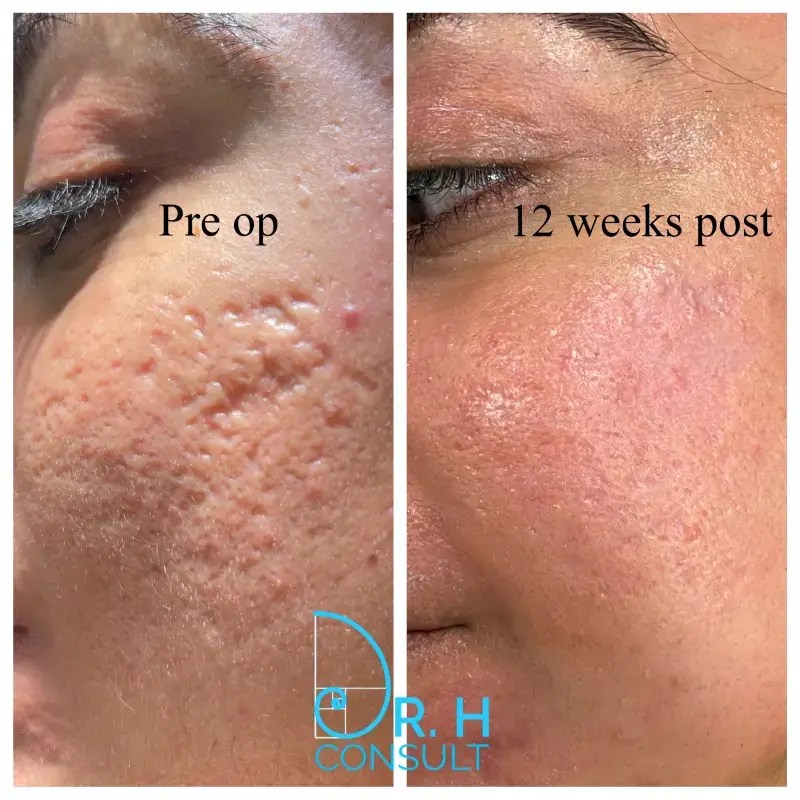Acne and Acne Scars Treatment: Transform Your Skin with Proven Solutions
Acne and Acne Scars Treatment: Transform Your Skin with Proven Solutions
Blog Article
Checking Out Skin Disease: Treating and determining Acne Scars for Healthier Skin
Acne marks represent a considerable problem for individuals looking for to preserve healthy skin, as they can impact both look and self-esteem. Recognizing the various types of scars, from atrophic to hypertrophic, is essential for establishing appropriate therapy alternatives.
Understanding Acne Marks
Comprehending acne marks is essential for any individual that has experienced serious acne, as these marks can have a long lasting effect on both physical appearance and mental wellness. When the skin undergoes inflammatory actions during energetic acne lesions, acne marks create. The severity of scarring is commonly affected by elements such as the kind of acne, its period, and specific skin characteristics.
The body's natural healing procedure can cause either atrophic scars, which appear as depressions in the skin, or hypertrophic scars, which are raised and result from overproduction of collagen. In addition, the mental toll of acne scars need to not be ignored; lots of people report sensations of humiliation, anxiousness, and decreased self-esteem. This emotional concern can impact social communications and general high quality of life.
Resolving acne marks requires a comprehensive understanding of their formation and impact. Recognition of the potential for lasting repercussions connected with without treatment scars can motivate individuals to look for proper treatments. Early treatment and reliable administration techniques can considerably improve skin look and enhance emotional strength, emphasizing the importance of recognizing the intricacies surrounding acne marks.
Kinds of Acne Scars
Acne scars can be classified into distinct kinds, each exhibiting unique characteristics and calling for certain treatment strategies. The main types of acne scars consist of atrophic, hypertrophic, and keloid scars.

Hypertrophic marks, in comparison, are elevated above the skin level and are the outcome of excessive collagen manufacturing throughout the healing procedure. They usually continue to be within the boundaries of the original acne lesion. Keloid scars are similar yet extend beyond the original injury site, developing bigger, elevated areas that can be scratchy or uncomfortable.
Recognizing these sorts of marks is necessary for picking appropriate treatment options. Different scars may respond far better to specific therapies, such as laser treatments, fillers, or surgical treatments, stressing the importance of a customized strategy to acne mark monitoring.
Recognizing Your Marks
When reviewing the look of your skin, it is important to precisely determine the type of scars present, as this will certainly educate one of the most effective treatment approach. Acne marks normally fall under 2 groups: atrophic and hypertrophic marks. Atrophic marks, which are the most common, show up as clinical depressions or imprints on the skin. These can better be classified into ice-pick marks, boxcar marks, and rolling scars, each exhibiting distinct characteristics and needing various approaches for analysis.
Hypertrophic marks, on the other hand, are elevated and happen as a result of extreme collagen manufacturing during the recovery process. Recognizing the certain features of your marks-- such as appearance, depth, and size-- is important for correct identification. In addition, consider the distribution of marks throughout your skin, as this can suggest the extent and duration of the acne problem.
Engaging with a skin specialist can give important understandings right into the nature of your scars, aiding in the distinction in between numerous kinds. An extensive understanding of your marks will eventually lead to an extra customized and effective treatment strategy, making certain a more clear and healthier skin tone.
Therapy Alternatives Readily Available
Identifying the particular kind of acne scars present on your skin lays the groundwork for checking out reliable therapy alternatives. Common kinds of acne scars include atrophic (clinically depressed), hypertrophic (elevated), and post-inflammatory erythema.
For atrophic scars, choices such as chemical peels, microneedling, and laser resurfacing are widely used. Chemical peels off make use of acids to get rid of the external layer of skin, advertising brand-new cell development.
Hypertrophic marks can be treated with corticosteroid shots to flatten the scar or laser therapy to reduce redness and boost look. skin rejuvenation treatments. Silicone gel sheets and stress dressings might likewise assist in managing elevated scars
Furthermore, dermal fillers can momentarily fill in depressions from atrophic marks, while medical excision may be appropriate for severe instances. Each treatment option has its factors to consider and benefits, making it vital to talk to a dermatologist. They can give individualized recommendations based on the kind and seriousness of your marks, along with your skin type and total wellness.
Tips for Avoidance
Effective avoidance strategies can substantially reduce the probability of establishing acne marks. Making use of non-comedogenic products assists protect against blocked pores, which can worsen acne.
Staying clear of the urge to choose or stand out acne lesions is critical, as this can result in much deeper skin damage and increase the danger of scarring. Instead, take into consideration making use of a cool compress or over-the-counter treatments to reduce swelling and redness.
Sun security is an additional essential facet of avoidance; ultraviolet (UV) rays can darken marks and prevent the recovery process. Applying a broad-spectrum sunscreen with at the very least SPF 30 daily can secure the skin and advertise also recovery.
Lastly, keeping a balanced diet regimen rich in anti-oxidants, see page vitamins, and minerals supports skin health and wellness and healing. Staying hydrated and handling stress and anxiety levels can likewise play a significant function in reducing acne flare-ups. By executing these strategies, people can dramatically reduce their possibilities of creating acne scars.

Final Thought
To conclude, understanding and recognizing acne marks is essential for effective treatment and achieving healthier skin. Different sorts of acne scars, including atrophic and hypertrophic scars, require certain treatments customized to specific requirements. Therapy choices variety from chemical peels and microneedling to corticosteroid injections, highlighting the significance of getting in touch with a skin doctor. In addition, taking on a mild skincare routine and safeguarding the skin from UV direct exposure can considerably add to find out this here the avoidance of more scarring and general skin health and wellness.
The body's natural recovery procedure can result in either atrophic marks, which appear as clinical depressions in the skin, or hypertrophic marks, which are raised and result from overflow of collagen. They are additional divided into 3 subtypes: ice pick scars, boxcar marks, and rolling scars. Acne marks typically fall right into two groups: hypertrophic and atrophic scars. These can better be categorized into ice-pick marks, boxcar scars, and rolling scars, each showing distinct qualities and needing different strategies for assessment.
Numerous kinds of acne marks, including atrophic and hypertrophic scars, require certain more treatments customized to individual requirements.
Report this page